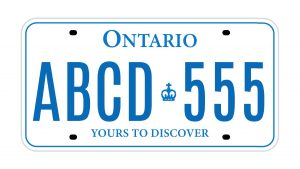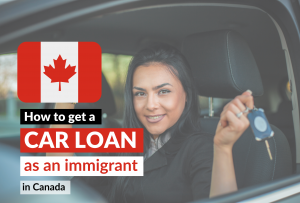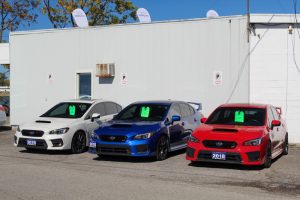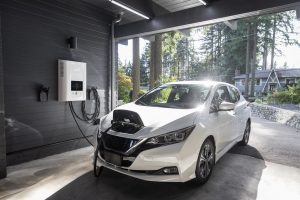Let’s take a look at how to buy a used car in Ontario and see if there’s a step you’ve missed the last time you bought a car.
I’ll also talk about how to buy a used car privately (skip to the last section of the blog post if you’re interested in that section).
1- Decide On the Car you want to buy
This is by far the most important step. This is the car that will likely be with you for 5-7 years so it really makes sense to spend a reasonable amount of time considering your options. Some people just hate the car buying process and may rush into the decision. Everything from dealing with salespeople, comparing specs, even the test drives may drive you crazy. But avoiding the research is the quickest way to end up with the worst models on average.
Look for reviews
Consult impartial review sites like Consumer’s Reports. Watch test drive videos on Youtube. Remember, many journalists are automobile enthusiasts so take some of their opinions with a grain of salt. If they think a car doesn’t accelerate well or handle nicely, they might be comparing it to the last sports car they tested. If you think you want a higher trim package or some luxury options but aren’t sure it’s worth the price, I suggest going for it. Like a nicer pair or shoes, the cost per wear is lower the longer you keep it, and having what you want should encourage a longer term ownership mindset.
Determine the right price
Check the market prices, throw out highs and lows. There are always some sellers who are dreaming when they come up with the price and there are also some faulty or rebuilt vehicles on the low end. You want to choose an example somewhere in the middle or average price range. I’ll usually start at the bottom of the mid-market pricing and try to identify why it’s priced on the lower end. Are there more visible scuffs or a previous cosmetic accident repair? Was it a Ford traded in at a Toyota dealer where they don’t have a natural clientele for Domestics (there is more chance a Ford sold in a Toyota dealer is at lower price than at Toyota dealership) The latter are my favorites to consider!
Watch the market for a few days if you can to understand the ebb and flow of prices and availability. Unless you need the car right away, start this process up to a month before you’re ready to buy to see if you can spot something truly special, be it the colour or options you’ve always wanted, or a better deal than average. At least you’ll know if the car you spotted in Week 1 is still sitting on the dealer’s lot in Week 4, and maybe bargain a better deal.
Before you visit the dealer, check the carfax online. If the seller doesn’t have it listed, ask for it. There will be a lot of information but also a handy summary of the most important areas.
2- Test drive
Take the car for a thorough test drive. Here’s a link to our post on vehicle inspections and it goes into more detail about a simple test drive process that anyone can follow, but don’t skip it!
3- Negotiate
I know, negotiation can be scary. You’ll find all kinds of negotiation guides about buying cars on the internet and much of the information is simply out of date or hard to do. Remember, the average consumer buys 7-10 cars in their lifetime and the average salesperson sells 7-10 cars a month. I’m here to say that if the car meets all of your needs and is priced in the fair to average range, it’s ok to pay full price. Of course you should ask for some concessions but in 2024, the vehicle market is truly in an unprecedented situation with inventory levels at historic lows. If things have changed by the time you read this, by all means sharpen your pencil. Honestly, if you buy a car in 2024, you are unlikely to succeed a huge negotiation.
If you are negotiating, do it after the inspection. You can make your best offer only when you’re aware of the condition. Don’t be shy to ask for a price adjustment and/or repairs to the defects your inspector notes. If it is at a dealership, you can try to negotiate some equipment (for example the tires). While “everything is negotiable” and you won’t get what you don’t ask for, it’s important to be realistic also.
4- Checks and Inspection
UVIP
Before all: the seller is legally required to provide the UVIP (Used Vehicle Information Package). A UVIP outlines a vehicle’s specifics, ownership, and history, including make, model, color, engine, and past owners. It reveals liens, wholesale value, minimum retail sales tax due, and the vehicle’s condition, aiding in comprehensive assessment. While a UVIP offers valuable information, it’s not sufficient for a safe purchase as it doesn’t include mechanical checks or inspections.
Safety inspection
Before registering a car on the road in Ontario (section 7-Registration) the vehicle must have a Safety Standards Certificate. This certificate is signed by a licensed mechanic after inspecting the vehicle for roadworthiness and safety. The “Safety” is not a guarantee of reliability or longevity, but just a check at the time that certain criteria are met.
This focuses on the following items:
all seat belts in good condition, no airbag faults, tires and brakes in safe working order with a minimum of remaining life, no holes in the body or frame that compromise the structural integrity or allow exhaust to enter the car, and all lights and signals are working properly. While these are basic, many things like air conditioning, stereo, or other important features are not checked.
A safety costs about $130 + taxes. Of course, it depends on the garage you chose.
Pre-purchase inspection
If the seller is providing the safety certificate, I would still insist on a third party inspection.
I saw too many people get surprised after buying the car, as the safety is only a basic check and doesn’t cover all the points that can cost you a leg.
The pre-purchase car inspection will check things that the safety doesn’t and be able to give you a better idea about the condition and history of the vehicle. At Kiwiz, we also tell customers the costs to expect in the near and middle term in term of repairs and maintenance.
5- Arrange financing
How to pay for your vehicle is a subject of strong debate. Many will avoid financing or leasing in favour of paying cash. While others would prefer easy monthly payments on a nicer car and don’t mind the additional interest cost. Either way, someone’s got to pay for the car! Car dealers often have a number of banks and lenders competing for your business. While if you’re buying from a private party, you can speak to your bank or credit union about the options. If you’re bringing your own lump sum payment, just be sure to clear it with the seller that you’re bringing a certified cheque or bank draft.
Avoid carrying large amounts of cash money to a dealer or meeting with a private seller, no one needs that risk.
6- Get insurance
A minimum of 24 business hours before taking delivery, you’ll need to arrange insurance. Insurance is mandatory in Ontario and it’s an offense not to carry proof of liability insurance when you’re driving your car. The minimum is 200,000 but most policies offer 1 Million as a starting point. The minimum has not kept up with inflation and if you’re sued for something you’ve done on the road 200,000 won’t get you very far. Decide on your deductibles and if the car is worth carrying Collision Insurance, most are!
7- Registration
In Ontario, you’re required by law to register the change of ownership of a vehicle within 7 days. At car dealerships, they will handle this function for you. If it’s a private sale, we recommend attending the Ministry office with the buyer and seller both present to complete the registration. Don’t risk forgetting to make the change or selling your vehicle to someone without witnessing the transfer. There are stories every year about people using a vehicle they bought but didn’t register for crimes or just to avoid paying tolls or parking tickets. It costs $32 to register a transfer of a vehicle in Ontario. If it’s a private sale, during registration is also where you’ll need to pay tax on the fair market value of the vehicle or the agreed purchase price, whichever is higher. Bring your safety inspection, insurance, and funds to pay for the HST.
8- Take Delivery
Now is the time to celebrate. The Hard work is over! Take a nice picture of yourself with the car to commemorate things. Maybe you’ll ban eating in the car for the first few weeks. Ultimately, enjoy the car you chose knowing you took a number of steps to make sure you made the best choice you could and now it’s time to use it for what it was intended for, driving!
How to buy a used car privately in Ontario?
When considering how to buy a used car privately in Ontario, it’s essential to understand that between 30% to 50% of buyers choose this route. The allure of purchasing a vehicle privately often lies in the potential for more attractive pricing compared to dealership offerings. However, this method typically requires a bit more legwork and diligence on the part of the buyer.
The steps are the same as purchasing to the dealership, except that you won’t be invited to the F&I (Finance & Insurance) office where a dealer typically try to sell you some financing and insurance products.
However, here are some key considerations:
- Pre-Purchase Inspection: Take into consideration that private sellers don’t know their car’s condition (even if they tell you they maintained it well!!). This makes it even more crucial for you to have the vehicle inspected by a professional and third-party mechanic like Kiwiz. An inspection can uncover potential issues that may not be visible to the untrained eye.
- Beware of Scams: The “fake private seller” scam is a potential risk when buying a used car privately. This can include sellers who are not the legal owners of the vehicle. They are individuals who sell multiple cars under the guise of being private sellers. Their cars are often involved in scams, such as odometer tampering to inflate the sale price.
Here are three tips to avoid them:
1. For instance, confirm the seller’s identity online. Google the seller’s name; if you find multiple cars listed under their name, it’s a red flag!
2. Ensure meetings take place at their home, not in public parking lots for example, and verify that the vehicle is registered in their name.
3. Sometimes, these “fake private sellers” might tell you they’re selling a car that belonged to their deceased grandmother or a mother who has left Canada. They use stories like these to make the sale seem more trustworthy and urgent, playing on your emotions to rush the decision. - Payment: If you agree with the private seller to place a deposit to reserve the vehicle (typically about 5% of the vehicle’s value), we recommend signing a contract. Here is a free Kiwiz contract available for your use.
I hope we helped you!
If you need help with a car inspection, our Kiwiz team will be happy to help you not to buy a lemon!
















